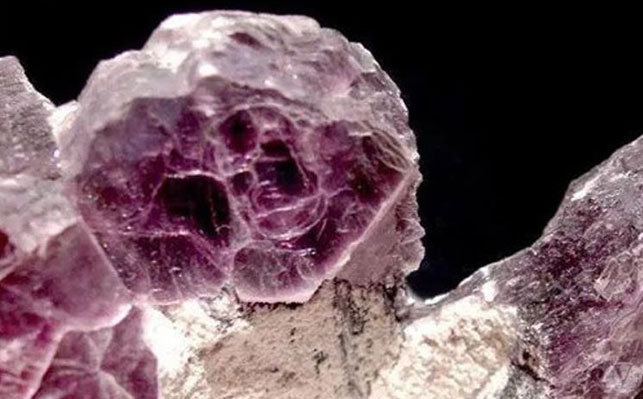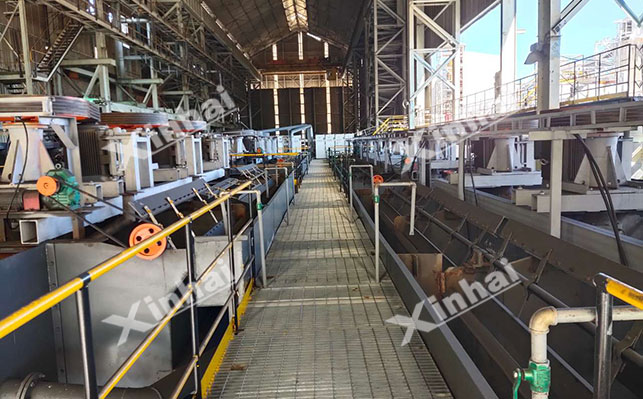
15311826613
Click to add WeChatLithium, as a critical strategic metal, plays an indispensable role in modern industry, especially in the new energy sector. The widespread application of lithium-ion batteries has led to explosive growth in demand for lithium. Lepidolite serves as a significant raw material for extracting metallic lithium. However, the beneficiation of lepidolite is challenging due to its complex nature. Flotation, commonly used in lithium ore processing, plays a crucial role in lepidolite beneficiation. This article provides a detailed introduction to the lepidolite flotation process.

Lepidolite is a layered silicate mineral belonging to the monoclinic crystal system. It often coexists with rare metals such as rubidium and cesium, adding complexity to the beneficiation process. On one hand, it requires comprehensive consideration of the recovery of lithium and associated rare metals during beneficiation. On the other hand, the floatability differences between lepidolite and associated minerals (such as feldspar and quartz) are minimal, making separation difficult. Additionally, mica's lamellar structure can easily lead to mud formation during grinding, affecting flotation efficiency and potentially causing losses of valuable minerals.

Mixed Flotation-Separation Flotation is a commonly used flotation process in lepidolite beneficiation, combining mixed flotation and separation flotation stages to fully utilize the floatability differences of minerals under different conditions, achieving effective separation of lepidolite from other minerals.
Mixed Flotation Stage: First, grind the lepidolite ore to ensure sufficient liberation of minerals. Then adjust the pulp pH to 6.3-8.0, which is conducive to the mixed flotation of lepidolite and quartz. Add collectors and modifiers to make lepidolite and quartz float together, obtaining a mixed rough concentrate.
Separation Flotation Stage: Adjust the pulp pH of the mixed rough concentrate to 2-4 by adding acid. Under strong acidic conditions, the floatability of lepidolite and quartz changes. Through flotation operations, separate lepidolite from quartz to obtain a lepidolite concentrate.
Non-desliming flotation is an important flotation method in lepidolite beneficiation, avoiding the loss of lepidolite during desliming and effectively improving resource utilization. The process is as follows:
Coarse Grinding-Coarse Flotation-Scavenging: Coarsely grind the lepidolite ore to achieve a certain degree of liberation. Adjust the pulp pH to 6.5-7.5 in weakly alkaline conditions. Add inhibitors (e.g., sodium silicate, lignosulfonates), collectors (e.g., cationic amine or fatty acid types), and high molecular flocculants for flotation. Inhibitors suppress the floating of gangue minerals like quartz; collectors selectively adsorb on the surface of lepidolite, making it float; high molecular flocculants promote particle aggregation, enhancing flotation efficiency, ultimately obtaining rough concentrates and tailings.

Two-stage Cleaning: Conduct two-stage cleaning on the obtained rough concentrates to further remove impurities and improve the grade of lepidolite concentrates. Multiple cleanings can elevate the quality of lepidolite concentrates to higher standards.
Pretreatment: Includes fine grinding and desliming. Fine grinding ensures complete liberation of lepidolite from other minerals due to its lamellar structure but can also lead to mud formation. Therefore, desliming before flotation removes fine-grained mud, reducing interference with flotation reagents and processes.
The above describes the flotation process of lepidolite. In actual beneficiation plants, due to the complex properties of lepidolite ores, multi-stage flotation processes are often required. Through multiple stages of roughing, cleaning, and scavenging, the grade and recovery rate of lepidolite concentrates can be gradually improved. During multi-stage flotation, each stage's flotation conditions (such as reagent dosage, pH value) need to be adjusted based on the mineral properties and results from the previous stage to ensure optimal flotation performance.